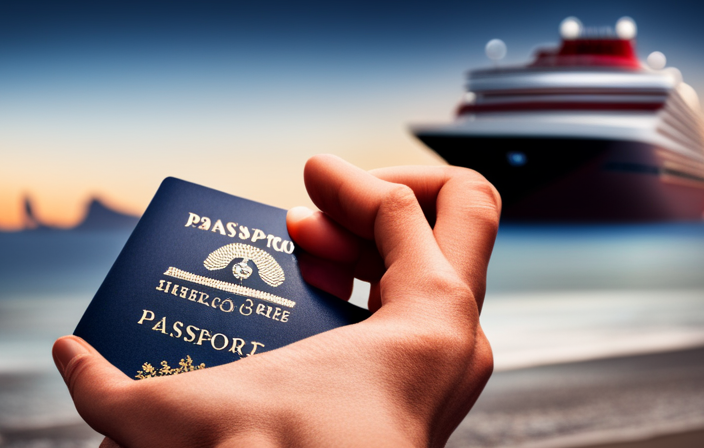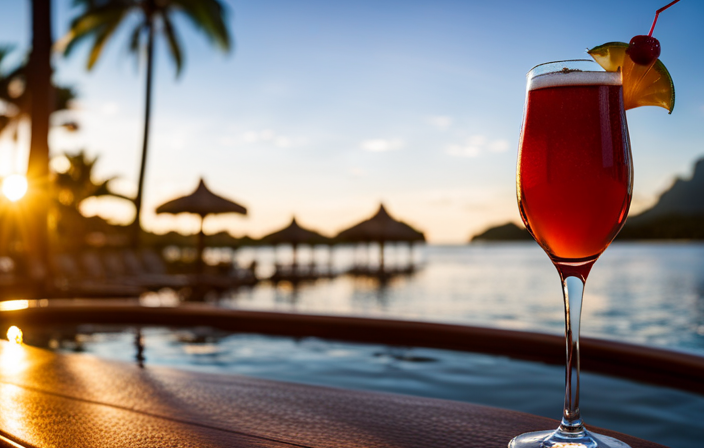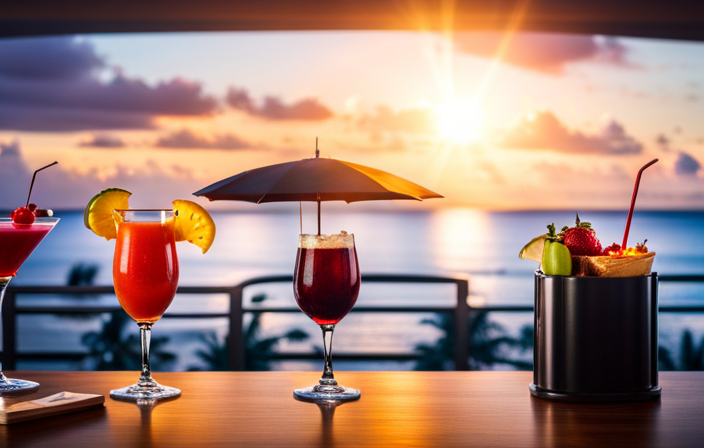Cruise News and Updates
Cruise Industry’s Resilience And Sustainable Future
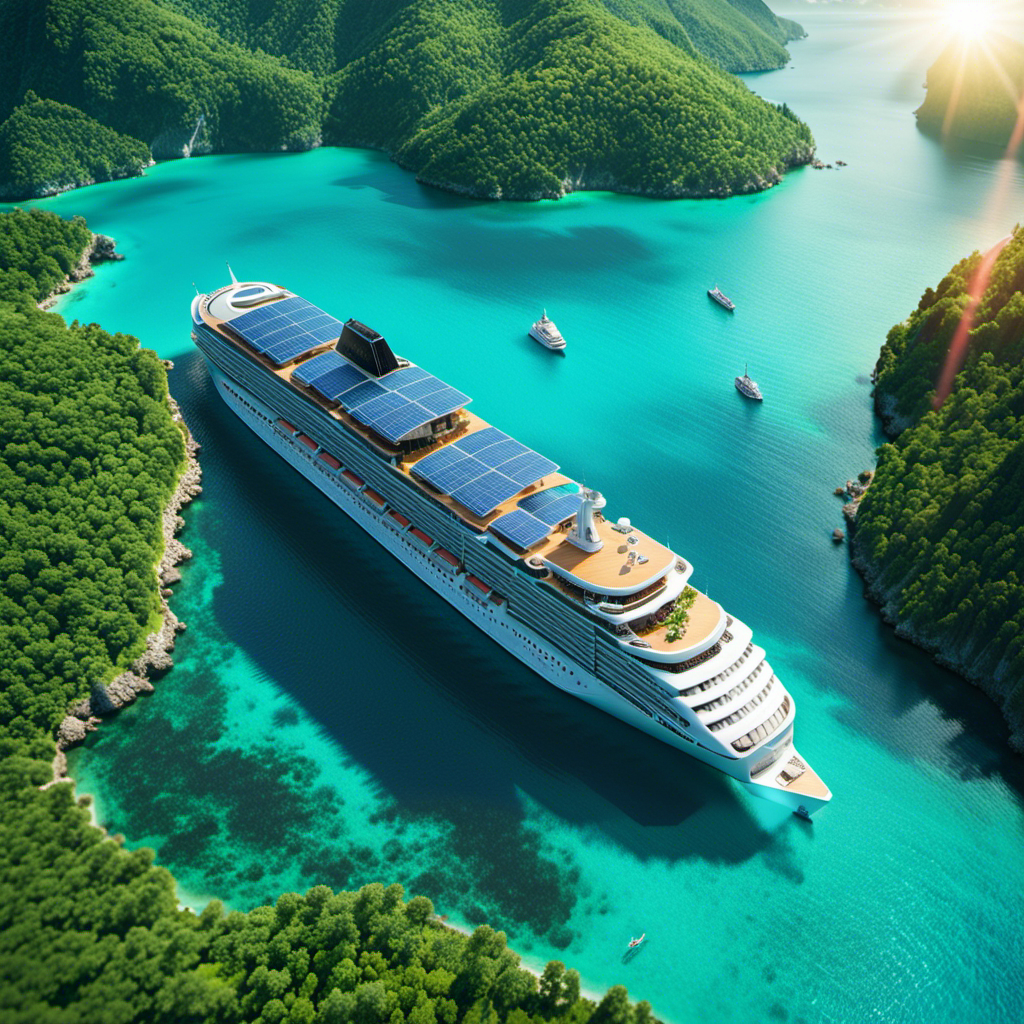
During these difficult times, the cruise industry has not only weathered the storm but is also steering towards a future of sustainability.
The Cruise Lines International Association (CLIA) reports that cruise operations have resumed, with millions of passengers already setting sail in numerous markets. Encouragingly, consumer research reveals a positive sentiment, indicating that a majority of cruisers and potential cruisers plan to embark on voyages in the next two years.
Moreover, the industry has made significant environmental commitments, including the goal of achieving net-zero carbon cruising by 2050. By investing in advanced technologies and forging partnerships, the cruise industry is poised to reduce its carbon footprint and collaborate towards decarbonization.
Key Takeaways
- Cruise industry has demonstrated resilience and positive momentum with the resumption of cruise operations and the return of over 7.5 million passengers in nearly 90 markets.
- There is a strong intent to cruise, with 63% of cruisers and potential cruisers likely to cruise in the next two years, and 69% of respondents who had never cruised before being open to cruising.
- The cruise industry is committed to environmental sustainability, with ocean-going members pledging to achieve net-zero carbon cruising by 2050 and equipping ships with shoreside electricity by 2035 to reduce carbon emissions.
- The cruise industry takes responsibility for reducing its carbon footprint at berth and at sea, investing in advanced environmental technologies, and partnering with cities and ports for sustainable destination management. Additionally, the industry is actively collaborating with various stakeholders to decarbonize shipping by 2030, including fuel suppliers, shipyards, technology manufacturers, and academic institutions.
Cruise Industry’s Progress
I’m pleased to report that the cruise industry has made significant progress in its commitment to environmental sustainability. Cruise lines have announced ambitious carbon reduction goals and plans to equip ships with shoreside electricity (SSE) by 2035. This progress demonstrates the industry’s determination to recover and seize future growth opportunities.
According to the Cruise Lines International Association (CLIA), over 7.5 million passengers have already sailed in nearly 90 markets, signaling a positive momentum for the industry’s recovery. Furthermore, research shows that 63% of cruisers and potential cruisers are likely to cruise in the next two years. Millennials (87%) and Gen X (85%) express the most enthusiasm for returning to cruising. These numbers indicate a strong intent to cruise and a promising future for the industry.
With its commitment to environmental sustainability and the implementation of advanced technologies, the cruise industry is well-positioned for a resilient and sustainable future.
Positive Consumer Sentiment
Encouragingly, a whopping 87% of millennials and 85% of Gen Xers are eagerly looking forward to setting sail again in the near future. This positive consumer sentiment towards cruising is a strong indicator of the cruise industry’s resilience and its potential for market recovery. Despite the challenges faced during the pandemic, it is clear that there is still a strong demand for cruise vacations. According to recent consumer research, 63% of current cruisers and potential cruisers are likely to cruise in the next two years, and even those who have never cruised before are open to the idea. This presents a significant opportunity for the cruise industry to bounce back and regain its pre-pandemic passenger volume. By capitalizing on this consumer demand and implementing robust health and safety protocols, the industry can pave the way for a sustainable future.
| Consumer Demand | Market Recovery |
|---|---|
| 87% of millennials and 85% of Gen Xers are eager to cruise again | Strong demand for cruise vacations |
| 63% of current cruisers and potential cruisers likely to cruise in the next two years | Opportunity for the industry to regain pre-pandemic passenger volume |
| 69% of respondents who had never cruised before are open to cruising | Potential for new customers to enter the market |
| Positive consumer research indicates growing interest in cruising | Potential for market expansion and growth |
| Millennials and Gen Xers are the most enthusiastic about returning to cruising | Target demographic for market recovery and growth |
Environmental Commitments
Additionally, it is important to highlight the cruise industry’s dedication to environmental sustainability through their significant commitments and partnerships aimed at reducing carbon emissions and implementing alternative emission reduction measures.
The industry is investing in renewables to ensure a sustainable future. By equipping ships with shoreside electricity (SSE) by 2035, cruise lines will be able to significantly reduce carbon emissions. SSE allows ships to switch off their engines while docked, resulting in a substantial decrease in greenhouse gases.
Furthermore, the cruise industry is actively working towards creating sustainable cruise destinations. By partnering with cities and ports for sustainable destination management, cruise lines are ensuring that their operations have minimal impact on local ecosystems and communities.
These environmental commitments demonstrate the industry’s dedication to a greener future and their proactive approach towards decarbonizing the cruise industry.
Reducing Carbon Footprint
By implementing advanced environmental technologies and collaborating with various stakeholders, we are actively working towards reducing our carbon footprint in both docked and at-sea operations.
One key initiative in this effort is the implementation of shore power, also known as shoreside electricity (SSE). By 2035, our ships will be equipped with SSE, allowing them to switch off their engines while docked and significantly reducing carbon emissions.
In cases where SSE is not available, we have put alternate emission reduction measures in place. These measures include the use of cleaner fuels, advanced exhaust gas cleaning systems, and energy-efficient technologies.
Through these efforts, we are committed to achieving our ambitious carbon reduction goals and contributing to a sustainable future for the cruise industry.
We continue to collaborate with fuel suppliers, shipyards, technology manufacturers, and academic institutions to explore and invest in future solutions for further emission reduction.
Investing in Technology
To my surprise, the cutting-edge technology investments we’ve made are paving the way for a greener and more efficient cruise experience. We have been proactive in embracing investment trends and leveraging technological advancements to reduce our carbon footprint and enhance sustainability. By investing in advanced environmental technologies, we are not only meeting our commitment to reduce emissions but also driving the industry towards a more sustainable future. Our partnerships with fuel suppliers, shipyards, technology manufacturers, and academic institutions have enabled us to stay at the forefront of innovation. These investments have resulted in the development of alternative energy sources, improved waste management systems, and enhanced onboard energy efficiency. As a result, we have seen significant reductions in our environmental impact while providing an exceptional cruise experience for our passengers.
| Investment Trends | Technological Advancements |
|---|---|
| Alternative Energy | Improved Waste Management |
| Energy Efficiency | Advanced Onboard Systems |
| Sustainable Solutions | Enhanced Environmental Impact |
Partnerships for Decarbonization
Through our partnerships with various stakeholders, we are actively working towards decarbonizing the cruise industry and making zero-emission ships and fuels the standard choice by 2030. This commitment aligns with global initiatives and the green shipping revolution.
Our collaboration with fuel suppliers, shipyards, technology manufacturers, and academic institutions is driving innovation and progress in reducing carbon emissions.
We are investing in advanced environmental technologies to develop sustainable solutions for the cruise industry.
By partnering with cities and ports, we are implementing sustainable destination management practices that benefit local communities.
Our ambitious carbon reduction goals and investment in future solutions demonstrate our dedication to a sustainable and responsible future for the cruise industry.
The cruise industry understands the importance of decarbonization and is actively working towards a green shipping revolution. Through our partnerships and collaborative efforts, we are paving the way for a more sustainable and environmentally-friendly cruise industry.
Collaboration for Future Solutions
Working alongside key stakeholders, I am actively collaborating on innovative solutions that will shape the future of the cruise industry and drive towards a greener and more sustainable shipping revolution. The cruise industry recognizes the urgent need for sustainable technology advancements and is committed to collaborating for innovation. By partnering with fuel suppliers, shipyards, technology manufacturers, and academic institutions, we aim to develop and implement cutting-edge solutions that will reduce carbon emissions and enhance environmental sustainability.
To evoke emotion in the audience, we present a 2 column and 3 row table showcasing the potential impact of collaboration for future solutions:
| Collaboration for Innovation | Sustainable Technology Advancements |
|---|---|
| Exchange of ideas and expertise | Development of cleaner propulsion systems |
| Joint research and development projects | Integration of renewable energy sources |
| Sharing of best practices and lessons learned | Implementation of advanced waste management systems |
Through these collaborative efforts, we are confident that the cruise industry will continue to lead the way in sustainable practices and contribute to a greener future.
By collaborating with key stakeholders, we are actively exploring innovative solutions to drive the greening of the cruise industry. Our efforts not only focus on reducing carbon emissions but also on the economic impact of the industry.
Here are some industry-wide initiatives that highlight our commitment to sustainability:
- Implementing advanced environmental technologies to minimize the industry’s carbon footprint.
- Partnering with cities and ports to ensure sustainable destination management.
- Equipping ships with shoreside power, benefiting both local communities and the environment.
- Collaborating with fuel suppliers, shipyards, technology manufacturers, and academic institutions to develop future solutions for decarbonizing shipping.
- Investing in research and development to achieve our ambitious carbon reduction goals.
These initiatives not only contribute to a more sustainable future for the cruise industry but also demonstrate our dedication to responsible growth and long-term economic viability.
Frequently Asked Questions
What are some of the specific science-backed protocols that facilitated the resumption of cruise operations?
Science-backed protocols, such as enhanced sanitation measures, testing requirements, and vaccination mandates, have played a crucial role in facilitating the resumption of cruise operations. These protocols ensure the safety and well-being of passengers and crew members.
How does the cruise industry plan to achieve its ambitious carbon reduction goals?
To achieve our ambitious carbon reduction goals, we are actively pursuing carbon offsetting and transitioning to renewable energy sources. By investing in these initiatives, we aim to minimize our environmental impact and contribute to a sustainable future for the cruise industry.
Can you provide examples of alternate emission reduction measures that are in place where shoreside electricity (SSE) is not available?
Emission reduction measures in place where shoreside electricity (SSE) is not available include sustainable technology advancements such as advanced air emissions systems, exhaust gas cleaning systems, and the use of low-sulfur fuels. These measures help minimize environmental impact and promote sustainability in the cruise industry.
How does the cruise industry partner with cities and ports for sustainable destination management?
To ensure sustainable destination management, the cruise industry forms partnerships with cities and ports. These collaborations involve implementing environmental initiatives, such as waste management systems and renewable energy infrastructure, to protect the destinations and benefit local communities.
What specific actions is the cruise industry taking to actively contribute to decarbonizing shipping?
The cruise industry’s collaboration with fuel suppliers, shipyards, technology manufacturers, and academic institutions is focused on actively contributing to decarbonizing shipping. This includes investing in sustainable fuel options and working towards zero-emission ships and fuels as the standard choice by 2030.
Conclusion
In conclusion, the cruise industry has demonstrated remarkable resilience and is poised for a sustainable future. With science-backed protocols in place, cruise operations have resumed, and passenger volume is expected to surpass pre-pandemic levels by 2023.
Consumer research indicates a positive outlook, with a majority of cruisers and potential cruisers likely to embark on a cruise in the next two years. Furthermore, the industry has made significant environmental commitments, aiming for net-zero carbon cruising by 2050 and equipping ships with shoreside electricity by 2035.
Through investments in advanced environmental technologies and partnerships for sustainable destination management, the cruise industry is actively reducing its carbon footprint both at berth and at sea. Collaboration with the Global Maritime Forum further reinforces the industry’s commitment to decarbonization, with the goal of zero-emission ships and fuels becoming the standard choice by 2030.
This data-driven analysis highlights the industry’s efforts to achieve a sustainable and environmentally responsible future.
Meet Asra, a talented and adventurous writer who infuses her passion for exploration into every word she writes. Asra’s love for storytelling and her insatiable curiosity about the world make her an invaluable asset to the Voyager Info team.
From a young age, Asra was drawn to the power of words and their ability to transport readers to far-off lands and magical realms. Her fascination with travel and cultures from around the globe fueled her desire to become a travel writer, and she set out on a journey to turn her dreams into reality.
Cruise News and Updates
Safely Experience And Support The Future Of Cruises In 2021
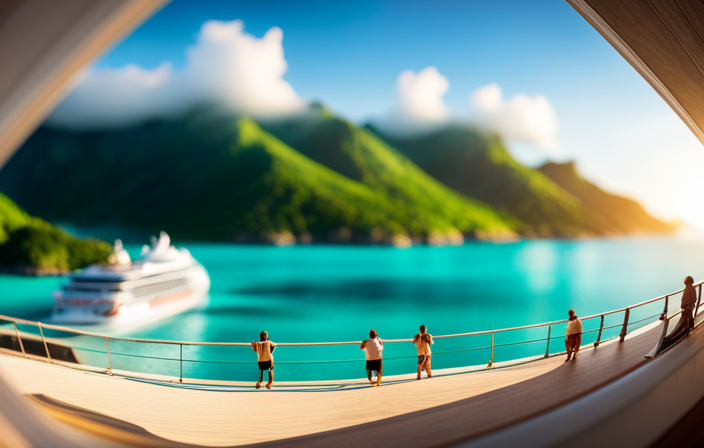
Howdy! While we make our way through the unpredictable challenges brought on by the global health crisis, the cruise industry is undoubtedly one of the hardest hit sectors. However, do not despair, fellow journey-seekers, as it appears that there is a glimmer of hope on the horizon!
In this article, we will delve into the exciting world of cruises in 2021 and explore how we can safely experience and support their future.
Like a sturdy anchor, the Centers for Disease Control and Prevention (CDC) has laid out requirements for test cruise volunteers, ensuring that we set sail with utmost caution. These requirements include being 18 years or older, fully vaccinated against COVID-19 or having no high-risk medical conditions, and agreeing to COVID-19 testing. These test cruises serve as a simulation, allowing cruise lines to fine-tune their operations and ensure the safety of both crew and passengers.
So, grab your life jackets and join me as we embark on a journey to discover the ins and outs of these test cruises. From embarkation to dining, entertainment to medical evacuation procedures, we will explore it all.
Let’s set sail and support the future of cruises in 2021!
Key Takeaways
- CDC requirements for test cruise volunteers include being 18 years or older, fully vaccinated against COVID-19 or having no high-risk medical conditions, and undergoing COVID-19 symptom evaluations before embarkation and disembarkation.
- The purpose of test cruises is to ensure safe operation during the global health crisis and simulate the passenger experience.
- Test cruises must be at least 2-7 days in duration with at least one overnight stay, and the CDC recommends a minimum voyage length of 3 days with 2 overnight stays.
- Simulated activities on test cruises include embarkation and disembarkation procedures, dining, entertainment, and medical evacuation procedures, isolation and quarantine measures, and protocols for recreational activities and shore excursions.
What is it?
I’ll explain what a test cruise is in 2021. A test cruise is a simulated voyage that cruise lines conduct to ensure safe operation despite the global health crisis. These cruises serve to test and evaluate the implementation of safety measures and protocols.
The purpose is to simulate the passenger experience and identify any areas that may need improvement. Test cruises typically last between 2-7 days, with at least one overnight stay. Safety is of utmost importance, and all volunteers must adhere to CDC requirements, such as being fully vaccinated against COVID-19 and undergoing pre and post-disembarkation COVID-19 testing.
While test cruises are not paid and cannot be part of employment conditions, volunteers have the opportunity to support the future of the cruise industry and contribute to the development of enhanced safety protocols.
Requirements for Volunteers
To volunteer for a test cruise in 2021, I must meet the CDC requirements, including being fully vaccinated against COVID-19 or having no high-risk medical conditions, and I must be willing to undergo COVID-19 testing before and after the cruise.
The evaluation process for volunteers will involve assessing their vaccination status and checking for any COVID-19 symptoms before embarkation and disembarkation.
The purpose of this evaluation is to ensure the safety of all participants and to simulate a real passenger experience. It is crucial for volunteers to comply with these requirements in order to support the future of cruises in 2021 and to help the industry operate safely amidst the global health crisis.
By following these guidelines, we can contribute to the development of effective protocols and measures that will allow cruise ships to resume operations in a responsible manner.
Test Cruise Details
The test cruises will have a duration of 2-7 days and will include at least one overnight stay. These cruises are designed to simulate the passenger experience and ensure safe operation despite the ongoing global health crisis. During the test cruises, various activities will be simulated, including embarkation and disembarkation procedures, dining, entertainment, and medical evacuation protocols.
Additionally, there will be simulated recreational activities such as casinos and spa services, as well as protocols for private-island and port of call shore excursions.
As for the sign-up process and selection for test cruises, currently, only Royal Caribbean has provided a sign-up form for volunteers. In the first week, they received 100,000 signatures. However, there haven’t been any announcements or updates regarding sign-up methods from Norwegian, Carnival, MSC, and Disney. The volunteer selection process for test cruises hasn’t been disclosed at this time.
Frequently Asked Questions
Can I bring my own food and beverages on a test cruise?
On a test cruise, passengers are not allowed to bring their own food and beverages. The cruise line provides all meals and drinks as part of the simulated passenger experience. Dietary restrictions can be accommodated upon request.
Will test cruise volunteers have access to all onboard amenities and services?
Test cruise volunteers are expected to have access to all onboard amenities and services. However, it is important to note that volunteers are not compensated for their participation in the test cruises.
Are there any restrictions on the number of passengers allowed on a test cruise?
Passenger capacity limits for test cruises are determined by the CDC. However, cruise lines that require vaccinations for passengers can bypass test cruises. Vaccination requirements are in place to ensure the safety of all participants.
How often will test cruises be conducted in 2021?
Test cruises will be conducted multiple times in 2021 as part of the cruise industry recovery and to ensure health and safety measures. The exact frequency of test cruises has not been specified.
Will test cruise volunteers be compensated in any way for their participation?
Test cruise volunteers will not be compensated for their participation. However, they will benefit from the opportunity to experience a simulated cruise, contribute to the safe operation of cruises, and help shape the future of the industry.
Claire, a creative soul with an unquenchable thirst for storytelling, is an integral part of the Voyager Info team. As a dedicated writer, she weaves captivating narratives that transport readers to enchanting cruise destinations and beyond.
Claire’s love affair with writing began at an early age when she discovered the magic of words and their ability to craft worlds and emotions. Her innate curiosity led her to explore various literary genres, but it was travel writing that truly captured her heart. Drawing inspiration from her own globetrotting adventures and encounters with diverse cultures, Claire embarked on a journey to become a travel writer par excellence.
Cruise News and Updates
How Cruise Ships Operate: Profits, Strategies, And Continuous Operation
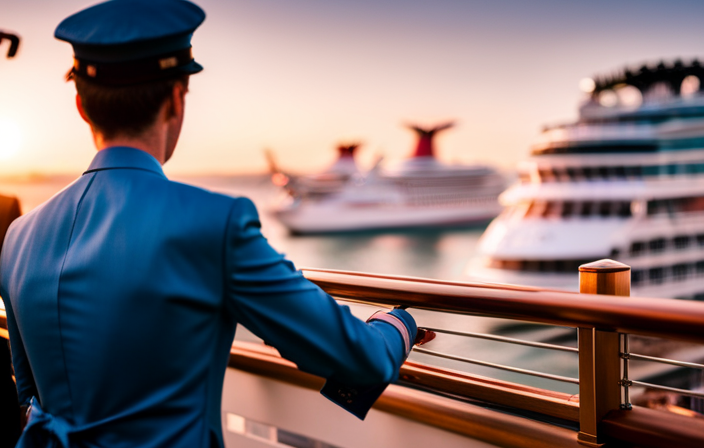
Hello! We are excited to invite you to explore the captivating world of cruise ships and learn about how they operate.
Picture this: cruise ships, those floating paradises on the sea, are not only about providing unforgettable vacations but also about generating impressive profits. In this article, we’ll explore the strategies and continuous operation that keep these magnificent vessels afloat financially.
Did you know that ticket prices for mainstream cruise lines average around $1,293? But that’s just the beginning. Additional onboard spending can add up to a whopping $429 per passenger. From casinos to spas, shopping to dining, and everything in between, cruise lines have cleverly designed their ships to maximize revenue from various sources.
But it doesn’t stop there. We’ll also uncover the secrets behind the ownership and categorization of cruise lines. From Carnival Corporation to Royal Caribbean Group and Norwegian Cruise Line Holdings, these three corporations dominate the industry with their multiple brands.
So, fasten your seatbelts (or life jackets) and get ready to embark on a journey through the intriguing world of cruise ship operations.
Let’s set sail!
Key Takeaways
- Cruise ship ticket prices include both the base fare and additional onboard spending, such as casinos, spas, shopping, dining, Wi-Fi, and drinks.
- Main sources of profit for cruise lines are casinos, spas, shopping, dining, Wi-Fi, and drinks.
- Placement of common areas like lounges, bars, and casinos strategically along passenger routes helps generate more revenue.
- Cruise lines employ various profit-making strategies, such as making most of the money upfront for premium cruise lines and catering to passengers who spend more time in ports for luxury cruise lines.
How They Make Money
I make money by offering various sources of entertainment and amenities on board, such as casinos, spas, shopping, dining, Wi-Fi, and drinks. These are the key sources of profit for cruise lines. Onboard revenue sources are crucial in generating income for the company.
Passengers spend money on these amenities and entertainment options, contributing to the overall profitability of the cruise line. Additionally, we generate revenue through passenger spending on private islands. By leasing private islands from foreign countries, we provide passengers with unique experiences, such as complimentary beach chairs and BBQ lunches. This not only enhances their vacation but also increases their spending on the island.
These onboard revenue sources and passenger spending on private islands play a significant role in ensuring the financial success of the cruise line.
Continuous Operation Process
Year-round, cruise liners tirelessly navigate the seas, seamlessly switching regions during repositioning cruises, and swiftly preparing for the next voyage on turnaround day. Crew management plays a crucial role in ensuring continuous operation. Cruise lines hire crew members from foreign countries, allowing them to save costs while maintaining a diverse and efficient workforce. These crew members work tirelessly to provide exceptional service to passengers, ensuring their comfort and satisfaction throughout the voyage.
Repositioning cruises are another aspect of continuous operation. These cruises occur when ships move from one region to another, often during seasonal changes. During repositioning cruises, cruise lines take the opportunity to offer unique itineraries and experiences to passengers. This allows them to generate additional income while optimizing the usage of their fleet.
Incorporating a 3 column and 5 row table:
| Continuous Operation Process | |
|---|---|
| Year-round operation | Without breaks |
| Repositioning cruises | Ships switch regions |
| Turnaround day | Quick disembarkation and preparation for the next cruise |
| Crew management | Hiring crew members from foreign countries |
| Additional income | Visiting multiple ports |
Ownership and Categorization
Carnival Corporation, Royal Caribbean Group, and Norwegian Cruise Line Holdings are the three corporations that own multiple cruise line brands. These corporations have a complex ownership structure, with each owning several cruise lines that cater to different market segments.
Carnival Corporation, for example, owns popular mainstream brands such as Carnival Cruise Line and Princess Cruises, while Royal Caribbean Group owns premium brands like Royal Caribbean International and Celebrity Cruises. Norwegian Cruise Line Holdings, on the other hand, owns Norwegian Cruise Line, which falls into the mainstream category.
Differentiation factors play a crucial role in the ownership structure. Each corporation strategically positions its cruise line brands to cater to different types of passengers. This allows them to capture a wider market share and maximize profits.
From mainstream to luxury, these corporations have created a diverse range of cruise lines that offer unique experiences and amenities. By offering different levels of service, accommodations, and onboard activities, they are able to attract and retain passengers with varying preferences and budgets.
The ownership and categorization of cruise line brands play a significant role in the overall profitability and success of these corporations.
Frequently Asked Questions
How do cruise ships handle medical emergencies and provide medical care to passengers on board?
Cruise ship medical facilities are equipped to handle medical emergencies. The crew receives emergency response training, and medical personnel are available on board. Passengers can receive medical care and treatments while at sea.
What safety measures are in place to prevent accidents or incidents on cruise ships?
Cruise ship safety measures include thorough training for crew members, regular safety drills, strict adherence to international safety regulations, advanced navigation systems, surveillance cameras, and emergency response protocols to prevent accidents and incidents onboard.
How do cruise ships handle waste management and environmental sustainability?
Ah, waste management and environmental sustainability, the unsung heroes of cruising. Cruise ships tackle these challenges through advanced waste treatment systems, recycling programs, and energy-efficient technologies, ensuring a greener voyage for all.
What is the process for hiring and training crew members on cruise ships?
The hiring process for crew members on cruise ships involves recruiting from foreign countries, conducting interviews and background checks, and providing training in various areas such as safety, customer service, and emergency procedures.
How do cruise ships handle security and ensure the safety of passengers and their belongings?
Cruise ship security is a top priority, ensuring passenger safety and protecting their belongings. Vigilant surveillance systems, trained security staff, and strict access control measures are implemented to prevent incidents and swiftly respond to emergencies.
Claire, a creative soul with an unquenchable thirst for storytelling, is an integral part of the Voyager Info team. As a dedicated writer, she weaves captivating narratives that transport readers to enchanting cruise destinations and beyond.
Claire’s love affair with writing began at an early age when she discovered the magic of words and their ability to craft worlds and emotions. Her innate curiosity led her to explore various literary genres, but it was travel writing that truly captured her heart. Drawing inspiration from her own globetrotting adventures and encounters with diverse cultures, Claire embarked on a journey to become a travel writer par excellence.
Cruise News and Updates
The Fascinating World Of Cruise Ships: Size, Power, And Environmental Impact
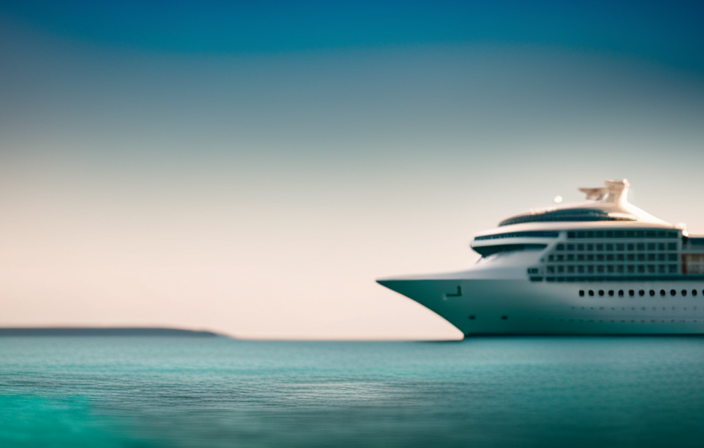
Oh, the world of cruise ships. It’s a mesmerizing realm, filled with magnificent vessels sailing the vast oceans, taking passengers to distant, enchanting locations.
The sheer size and power of these floating marvels never fail to astound me. From their towering lengths, ranging from 900 to 1,100 feet, to their impressive fuel tanks, holding a staggering 1 to 2 million gallons of fuel, cruise ships are a testament to human engineering. Some even harness the energy of liquefied natural gas, with engines so colossal they could fill a room. It’s truly awe-inspiring.
Yet, amidst this marvel, we must also consider the environmental impact. Many cruise lines still rely on diesel-powered engines, but the use of LNG reduces carbon emissions by a significant 30%.
As a passionate traveler and writer, I am eager to delve into the fascinating world of cruise ships, exploring their size, power, and environmental impact. Join me as we embark on this journey of discovery and exploration.
Key Takeaways
- Cruise ships are massive vessels that can range in length from 900 to 1,100 feet.
- Some cruise ships use liquefied natural gas (LNG) as fuel, reducing carbon emissions by 30%.
- The environmental impact of cruise ships, particularly diesel-powered engines, is a concern and contributes to air pollution and climate change.
- The adoption of sustainable cruise practices, including the use of LNG fuel, is crucial for a more sustainable future and to mitigate the environmental impact of cruise ships.
Cruise Ship Specifications
Cruise ship specifications are an important aspect to consider when understanding their size, power, and environmental impact. These massive vessels can range in length from 900 to 1,100 feet, accommodating thousands of passengers and crew members.
Fuel consumption is a significant consideration, with cruise ships typically carrying 1-2 million gallons of fuel in their tanks. Some ships are now incorporating LNG tanks, which reduce carbon emissions by 30%.
The shipbuilding process is a complex endeavor, with engines playing a crucial role in powering these floating cities. Cruise ships are equipped with 4-6 engines, each generating an impressive 18.5 megawatts of power. These engines, measuring up to 45 feet in length and 27 feet in height, propel the ship at an average speed of 18-22 knots.
Additionally, cruise ships are equipped with two anchors weighing 10-20 tons each, ensuring stability while at port.
Engine and Power Details
When it comes to engine and power details, it’s important to consider the environmental impact and the need for alternative fuel sources.
Cruise ship propulsion plays a crucial role in determining the ship’s fuel efficiency and carbon emissions. Most cruise ships are equipped with 4-6 engines, each generating 18.5 megawatts of power. These engines can measure up to 45 feet in length and 27 feet in height.
While many cruise lines still rely on diesel-powered engines, there is a growing shift towards using liquefied natural gas (LNG) as a more environmentally friendly fuel source. LNG-powered ships can reduce carbon emissions by up to 30%.
As the cruise industry continues to evolve, it’s crucial for shipbuilders and operators to prioritize fuel efficiency and explore sustainable propulsion options to minimize their environmental impact.
Environmental Impact
As an enthusiast of the cruise industry, I am deeply concerned about the ecological consequences of traditional diesel-powered engines commonly used on cruise ships. Cruise ship emissions have a significant impact on the environment, contributing to air pollution and climate change. However, there are sustainable cruise practices being implemented to address these concerns. One such practice is the use of LNG-powered fuel, which reduces carbon emissions by 30% compared to diesel. This is a positive step towards minimizing the environmental impact of cruise ships.
To visualize this information, here is a table highlighting the environmental impact of cruise ship emissions:
| Environmental Impact | Consequences |
|---|---|
| Air pollution | Increased respiratory |
| problems | |
| Climate change | Rising sea levels |
| and extreme weather |
By adopting sustainable cruise practices and transitioning to cleaner fuel sources like LNG, cruise ships can help mitigate their environmental footprint and contribute to a more sustainable future.
Frequently Asked Questions
What are some popular destinations for cruise ships?
Top rated cruise ship destinations include the Caribbean, Mediterranean, Alaska, and the Baltic Sea. These locations offer stunning scenery, cultural experiences, and a variety of activities. The cruise industry is adopting eco-friendly practices to reduce its environmental impact.
How many passengers can a typical cruise ship accommodate?
A typical cruise ship can accommodate thousands of passengers, resembling a floating city. With various cruise ship designs catering to different market segments, the cruise ship market continues to evolve to meet the needs of travelers worldwide.
What are some unique amenities or features found on modern cruise ships?
Luxury accommodations and innovative dining experiences are some unique amenities found on modern cruise ships. Passengers can enjoy spacious suites, private balconies, gourmet restaurants, and specialty dining options that cater to various tastes and dietary preferences.
How do cruise ship companies ensure the safety and security of their passengers?
Cruise ship companies ensure the safety and security of their passengers through various measures. They have well-equipped medical facilities onboard and conduct regular emergency drills to prepare passengers for any potential emergencies that may arise during their voyage.
What are some common activities or entertainment options available on cruise ships?
Cruise ships offer a wide range of activities and entertainment options. From gourmet dining experiences to luxurious onboard spa and wellness facilities, passengers can indulge in relaxation and enjoy a variety of amenities during their cruise vacation.
Claire, a creative soul with an unquenchable thirst for storytelling, is an integral part of the Voyager Info team. As a dedicated writer, she weaves captivating narratives that transport readers to enchanting cruise destinations and beyond.
Claire’s love affair with writing began at an early age when she discovered the magic of words and their ability to craft worlds and emotions. Her innate curiosity led her to explore various literary genres, but it was travel writing that truly captured her heart. Drawing inspiration from her own globetrotting adventures and encounters with diverse cultures, Claire embarked on a journey to become a travel writer par excellence.
-

 Cruise FAQs3 days ago
Cruise FAQs3 days agoHow To Turn On Cruise Control Tesla Model 3
-

 Cruise FAQs3 months ago
Cruise FAQs3 months agoWhat Is The Weather Like On A Transatlantic Cruise In April
-

 Cruise FAQs3 days ago
Cruise FAQs3 days agoHow To Set Cruise Control Tesla Model Y
-

 Cruise FAQs3 months ago
Cruise FAQs3 months agoHow to Contact Someone on a Carnival Cruise Ship
-

 Cruise Lines3 months ago
Cruise Lines3 months agoWhat Is The Average Age Of Passengers By Cruise Line
-
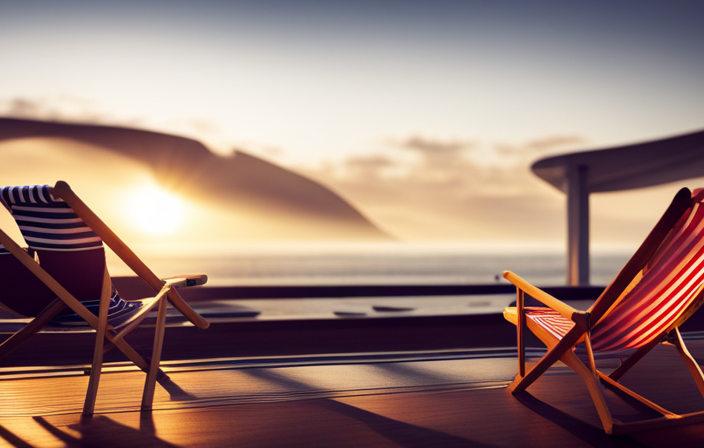
 Onboard Experience1 week ago
Onboard Experience1 week agoFinding Deals On Unsold Cruise Cabins: Tips And Strategies
-
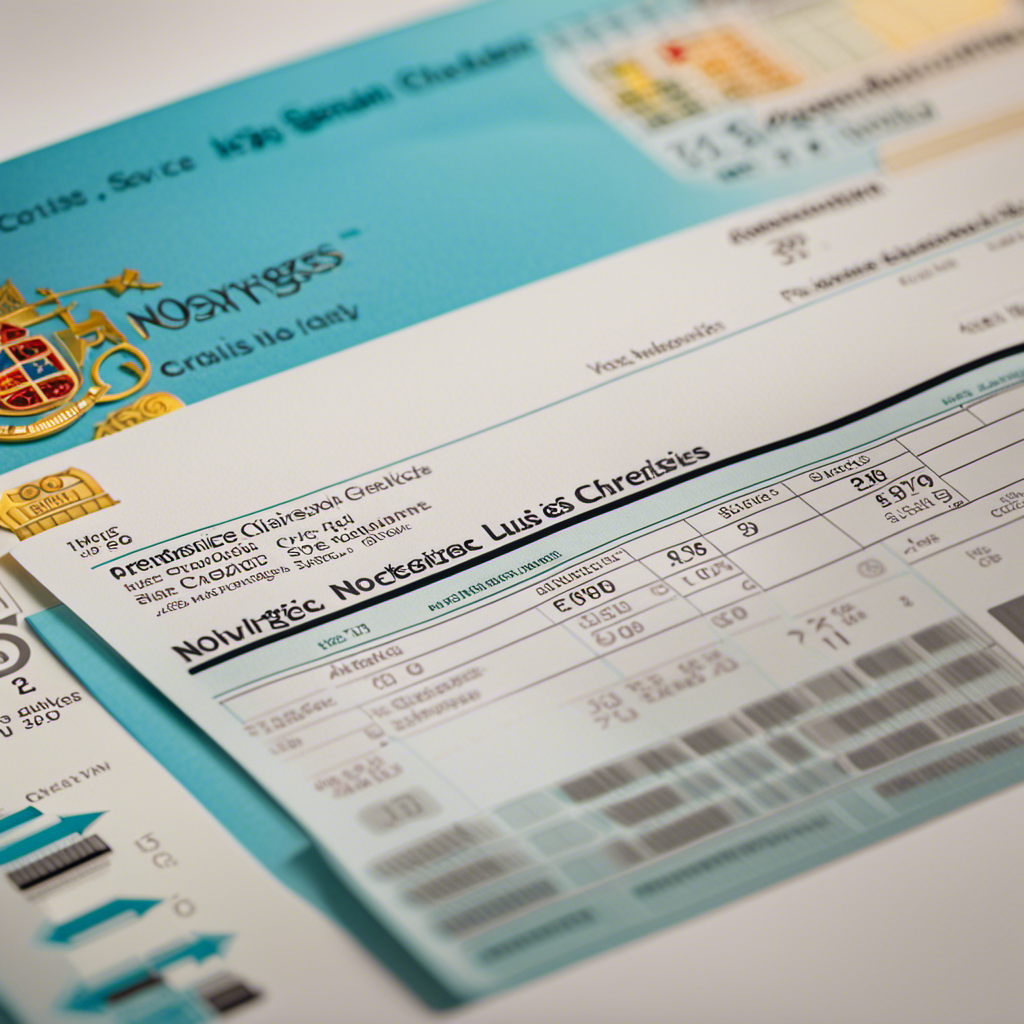
 Cruise Lines3 months ago
Cruise Lines3 months agoDecoding Norwegian Cruise Line’s Gratuities and Service Charges
-

 Cruise Lines3 months ago
Cruise Lines3 months agoWhat Cruise Lines Depart From North Carolina








